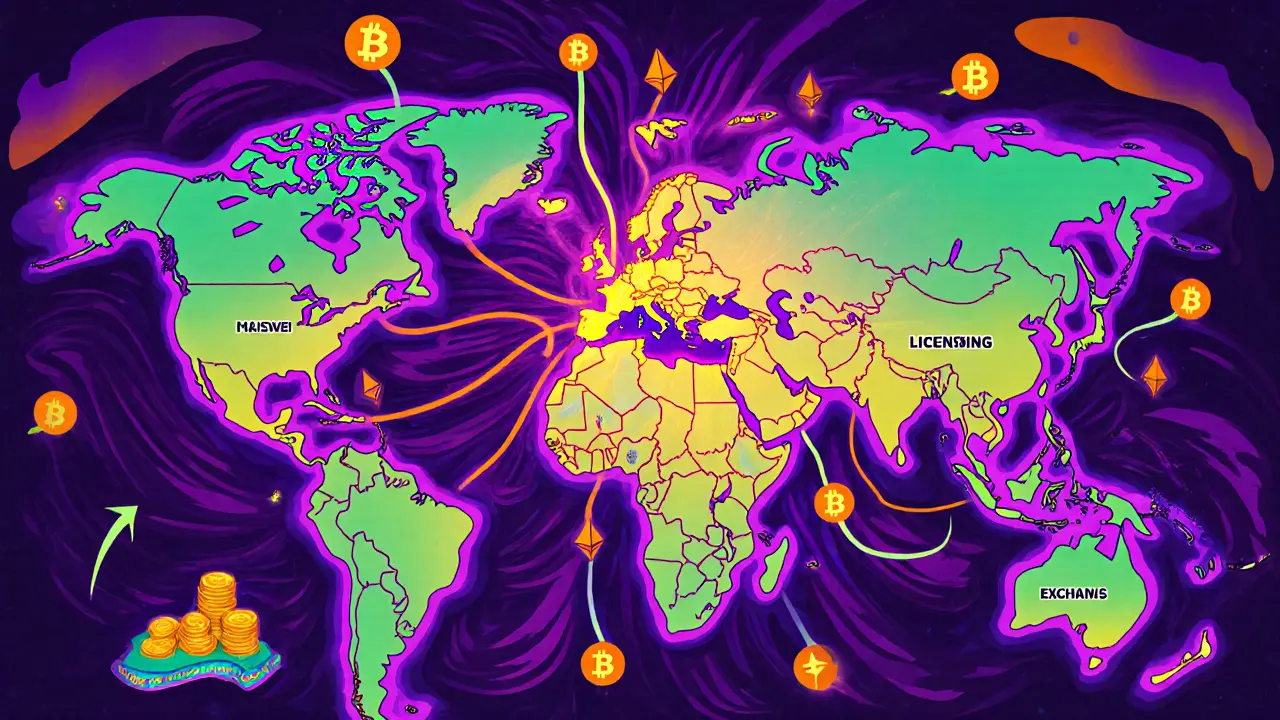Crypto Regulation: What’s Legal, Banned, and Enforced in 2025
When you hold crypto, you’re not just dealing with technology—you’re navigating crypto regulation, the set of laws and rules governments use to control how digital assets are issued, traded, and taxed. Also known as digital asset regulation, it’s no longer optional background noise—it’s the framework that decides whether your holdings are safe, taxable, or outright illegal. In 2025, this isn’t about vague warnings anymore. It’s about real penalties, licensed exchanges, and wallets that get frozen if you don’t follow the rules.
Take the MiCA regulation, the European Union’s first comprehensive framework for crypto assets. Also known as Markets in Crypto-Assets Regulation, it forces exchanges, issuers, and wallet providers to get licensed, disclose risks, and follow strict anti-fraud rules. If you’re trading in the EU, MiCA isn’t something you read about—it’s something you comply with, or you get shut down. Meanwhile, the AML crypto EU, the anti-money laundering rules tied to MiCA and the new AMLR. Also known as crypto AML regulations, it requires every transaction over €1,000 to carry sender and receiver info—the so-called Travel Rule. That means even small DeFi swaps can trigger compliance checks if they involve EU-based services. And it’s not just Europe. The OFAC cryptocurrency sanctions, U.S. government rules that block transactions with wallets linked to criminals, terrorists, or sanctioned countries. Also known as blockchain sanctions, they apply to every crypto business handling U.S. users. If your wallet touches a flagged address, your funds can be frozen—even if you didn’t know it was risky. Countries like Qatar outright ban Bitcoin, but allow tokenized real estate. India doesn’t ban non-custodial wallets, but makes them nearly useless with 30% taxes and unclear reporting rules. Mexico lets exchanges operate, but only if they register with the central bank and prove they’re tracking every transaction.
What you’ll find in the posts below isn’t a list of headlines—it’s a practical map. You’ll see exactly where Bitcoin is legal tender, which countries are cracking down on airdrops, and how tokenized gold and private credit are slipping through regulatory cracks. You’ll learn what the Travel Rule actually means for your wallet, how OFAC screening tools work in real life, and why some exchanges are disappearing from India overnight. No fluff. No theory. Just what you need to know to keep your crypto safe, legal, and under your control in 2025.
Global Crypto Regulatory Convergence Trends: How Countries Are Aligning Digital Asset Rules
Global crypto regulation is aligning around MiCA standards, with major economies adopting consistent rules for stablecoins and exchanges. This convergence is boosting institutional investment, reducing volatility, and pushing small players out of the market.
